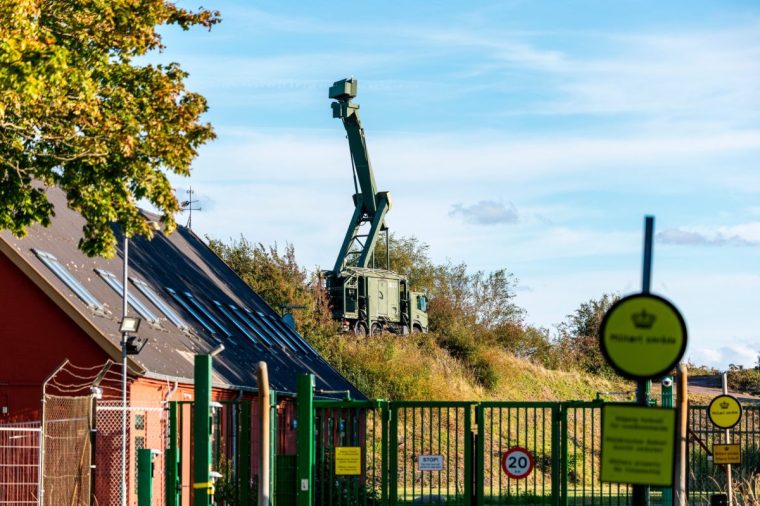Europeans have little idea of the true scale of Russia’s ‘hybrid attack’ campaign against them – this must change if we are to respond adequately
A surge in drone incursions across northern Europe has boosted plans for a “drone wall”, a layered defence and detection system to protect Europe’s eastern frontier from drone threats from Russia.
But this response is both far too late, and won’t help with the challenge seen in Europe this month.
Plans for drone defence have already been delayed through European dithering. In March, the European Commission rejected an application from Estonia and Lithuania for funds to set defences up.
Now, it’s expected to be a whole year before the first elements of this defensive line are put in place. As Poland knows from the drone incursion it faced in early September, that’s more than a year too late – and years behind the threat that Ukraine experiences every night.
In addition, a single defensive belt on the border with Russia won’t deter the tactics that are alarming Europe. Like a drone Maginot Line (a 1930s French defensive barrier against Germany), the “wall” won’t defend anything if Russia is already behind it.
The drones that shut down Danish and Norwegian airports last week were launched from far nearer than Russia – with ships suspected as the possible launch and control bases.
Ukraine itself has shown that drone attacks can be launched from deep inside the target’s territory. Operation Pavutyna, or Spider’s Web, launched multiple drones against Russian airports – and if Ukraine can do this under the noses of Vladimir Putin’s FSB intelligence service, it will be far easier for Russia to mount a similar exploit against the open societies of Europe where locals have shown themselves only too willing to be recruited for Russian operations.

During the current wave of incidents across Europe, Russia has often been described as “testing” Nato. But that process of testing has been continuing for years, with the boundaries of what Russia will attempt continually expanding as Nato and individual victim countries regularly fail the tests.
Russia must by now be acting on its findings – confirming for itself that it can act with impunity, and most of all that whatever happens in Europe, the United States under Donald Trump can be relied on not to respond in a manner that is uncomfortable for Moscow.
With the Trump administration accelerating its programme of authoritarian state capture in the United States, the US President (or whoever is directing his actions) is engaged in providing distractions to ensure that affairs in Europe are of even less concern to Americans – such as last week’s declaration of war on Portland, Oregon, which somebody had told Trump was already “war-ravaged”.
That only confirms that European countries have to look to their own resources to defend themselves against Russia.

Denmark, France, Germany and the UK have all separately announced that they will deploy aircraft to Poland – without fully explaining how that will help address the drone threat there or Russian airspace violations in Estonia.
There’s also talk of reviewing the rules of engagement governing when Russian aircraft can be intercepted, after the uncomfortable realisation that there is a distinction between Nato’s “air policing” mission in northeast Europe and actual air defence.
There is another option. By limiting themselves to countering Russian air threats only after they have crossed their borders rather than before they arrive, European countries can only set a red line after they are attacked – and, potentially, civilians are dead – rather than before.
If, instead, they adopted the Sky Shield plan for defending forward in the airspace of western Ukraine, they could demonstrate to Russia that their airspace will be protected before that is put to the test.
Critics of Sky Shield point to fears of inadvertent clashes between Russian aircraft and those of a Nato member state. But in doing so they often overlook the fact that the westernmost portion of Ukraine is far beyond the operating areas of Russian manned planes – and the only threats that would be intercepted are drones and missiles aimed at civilians.
Sky Shield would also serve as a deterrent for Russia, simply by demonstrating that Russian actions lead to consequences that are uncomfortable for Moscow.
But that requires public admission of the extent of Russia’s hostile actions in all domains, not just the air. Because some countries have chosen to be reticent about what they call “hybrid attacks” from Russia, people in Europe have little idea of the scale of the campaign. That has to change for Europe to respond adequately.
Russia’s next steps depend on Europe’s response.
When Russia finds a vulnerability, it will exploit it: meaning that even if Russia were not behind some of the drone incursions, it still learns from them.
The one thing that is certain is that if European countries show themselves defenceless against these attacks and powerless to respond, that is all the incentive Russia needs to step them up.
Europe needs another answer – one that is much faster, and causes a much bigger problem for Russia – if it is to avoid far greater and more widespread disruption.
Keir Giles is a writer and commentator on Russian affairs. He is a former senior consulting fellow with the Russia and Eurasia programme at Chatham House in London and author of Russia’s War on Everybody and Who Will Defend Europe?
